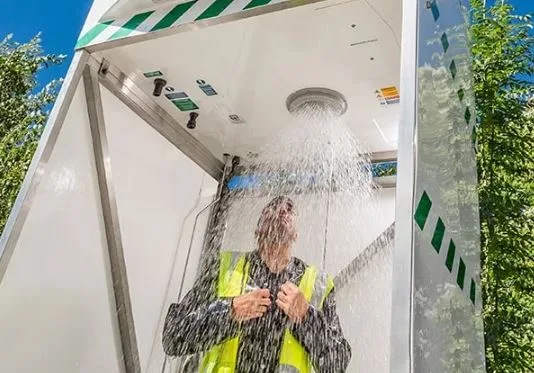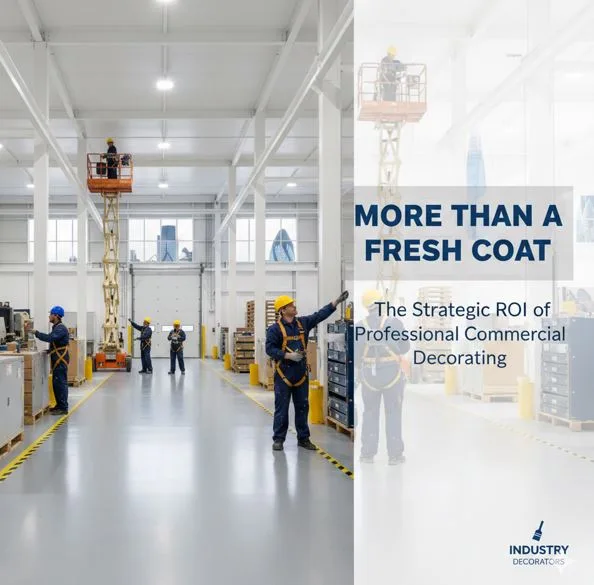When Do You Need a Self-Contained Safety Shower? Perfect Solutions for Remote or Outdoor Sites
In industrial safety, there are few devices as critical—and potentially lifesaving—as the emergency safety shower. These units provide immediate decontamination for workers exposed to hazardous chemicals, heat, or biological contaminants. But in remote environments or outdoor worksites where access to a fixed water supply is limited or unavailable, traditional plumbed safety showers are impractical. That’s where the self-contained safety shower becomes a necessity.
In this blog post, we’ll explore the key scenarios where self-contained safety showers are not just useful but essential, and how to choose the right one for your remote or outdoor work site.
What Is a Self-Contained Safety Shower?
A self-contained safety shower is a portable or fixed unit that holds its own water supply and operates independently of plumbing infrastructure. Unlike plumbed-in systems that require a constant connection to a water source, self-contained showers are filled manually or through mobile water delivery and are designed to provide the required 15 minutes of continuous water flow per ANSI/ISEA Z358.1 standards.
They often include insulated or heated tanks, immersion heaters, or solar power systems to ensure temperature-controlled water in all seasons. These units can also integrate with eyewash stations for comprehensive emergency decontamination.
Why Are Self-Contained Safety Showers Crucial?
- Remote Locations with No Plumbed Water Access
Construction sites, mining operations, oil and gas fields, and agriculture facilities are often located in areas with no built-in water infrastructure. Workers handling caustic chemicals or performing hazardous maintenance in these conditions are still subject to OSHA safety regulations, which mandate emergency showers and eyewash stations under certain risk scenarios.
Without a self-contained safety shower, these employees are at serious risk of injury or worse in the event of an accident. These units bridge the infrastructure gap, delivering compliance and protection in even the most isolated locations.
- Temporary or Mobile Worksites
Jobsites that shift regularly—such as pipeline construction, military deployments, or environmental cleanup efforts—need portable safety equipment. Since plumbing may change or disappear as the site evolves, fixed safety showers lose their utility.
Self-contained showers are ideal in these dynamic environments. Some are skid-mounted or trailer-based, allowing for easy transportation and rapid redeployment as site configurations change.
- Outdoor Facilities in Harsh Climates
Outdoor worksites present unique challenges. In hot climates, water in traditional systems can reach dangerous temperatures. In cold climates, standing water in pipes can freeze, rendering emergency showers useless—or even dangerous—if not properly heated.
Self-contained units come with weatherproofing features such as:
- Insulated tanks to maintain temperature
- Immersion heaters or trace heating to prevent freezing
- Temperature-regulating valves to deliver tepid water (60–100°F)
These features ensure compliance and safety year-round, no matter the environment.
When Are You Legally Required to Have One?
According to ANSI/ISEA Z358.1, any worksite that uses hazardous materials must provide an emergency eye/face wash and/or shower within 10 seconds of the potential hazard. While the standard doesn’t distinguish between plumbed and self-contained units, it does require:
- 15 minutes of uninterrupted flow
- Minimum flow rate of 20 gallons per minute (GPM) for showers
- Tepid water delivery
- Hands-free operation
If your site cannot meet these requirements with plumbed systems—whether due to location, logistics, or seasonality—a self-contained safety shower becomes not just an option, but a compliance requirement.
Key Features to Look For in a Self-Contained Safety Shower
When selecting a self-contained safety shower, not all models are created equal. Here’s what to look for to ensure you’re providing the best protection possible:
- Tank Size & Duration
To meet ANSI standards, the unit must supply water for at least 15 minutes. For example, a shower flowing at 20 GPM will require a minimum 300-gallon tank. Eyewash-only units may need significantly less.
Consider how many users the unit must support and how frequently it will be refilled when determining the appropriate tank size.
- Tepid Water Capabilities
Tepid water is not just a comfort issue—it affects the user’s ability to remain under the shower for the full 15 minutes. Choose models with:
- Thermostatically controlled heaters
- Solar-powered warming units (for off-grid)
- Frost protection in cold environments
- Mobility and Deployment
Depending on your site’s mobility, choose between:
- Stationary models: Ideal for semi-permanent remote facilities
- Trailer-mounted units: Perfect for shifting work zones
- Compact portable units: Best for low-volume, mobile teams
- Maintenance and Alarms
Look for models with features such as:
- Low water level alarms
- Battery-powered indicators
- Visual inspection ports
- Easy drain and refill access
Maintaining water hygiene is crucial. Regular flushing and disinfection are necessary to prevent bacteria buildup such as Legionella.
Industries That Rely on Self-Contained Safety Showers
Many sectors find these safety solutions indispensable. Some of the most common include:
Oil & Gas
Refineries and drilling operations often work in extreme climates and isolated fields, where exposure to caustic drilling fluids, chemicals, or fuel spills is high. Self-contained units ensure OSHA compliance without costly infrastructure.
Mining
Mines frequently involve the use of acids, fuels, and dust in tight or underground environments. Fixed water lines are rare, making portable safety showers vital for worker protection.
Construction
Many construction activities involve solvents, adhesives, and other hazardous materials. On large-scale or infrastructure projects like bridges, tunnels, or pipelines, fixed safety stations may be too far away or entirely absent.
Agriculture & Pesticide Application
Pesticide sprayers and fertilizer handlers must have access to emergency decontamination solutions when working far from facilities. A self-contained safety shower provides assurance during field applications or mixing.
Military & Emergency Response
When deployed in the field—whether during combat support or disaster recovery—teams require agile safety solutions. Trailer-mounted or compact models offer compliance and rapid response capacity.
Real-World Use Case: Pipeline Construction in the Rockies
A construction firm installing a natural gas pipeline through the Rocky Mountains needed a reliable safety solution for their mobile crew. Plumbed water was unavailable due to the rugged terrain. Weather posed an additional challenge, with freezing temperatures common by mid-fall.
The company opted for self-contained safety showers with 400-gallon heated tanks, solar battery backups, and integrated eyewash units. Mounted on skids and trailers, they could be relocated every few weeks along the pipeline route. The built-in alarms and thermostats ensured safety despite environmental extremes—and allowed the company to meet OSHA regulations without expensive infrastructure installation.
Don’t Wait for an Emergency
A self-contained safety shower isn’t just a convenient alternative to plumbed systems—it can be a lifesaving necessity. For remote, temporary, or climate-challenged sites, these showers offer compliant, flexible, and immediate protection against the devastating effects of chemical exposure or burns.
Choosing the right unit requires careful evaluation of tank capacity, mobility, heating, and maintenance features. By planning ahead, you ensure not only legal compliance but also the safety and confidence of every worker on site.







